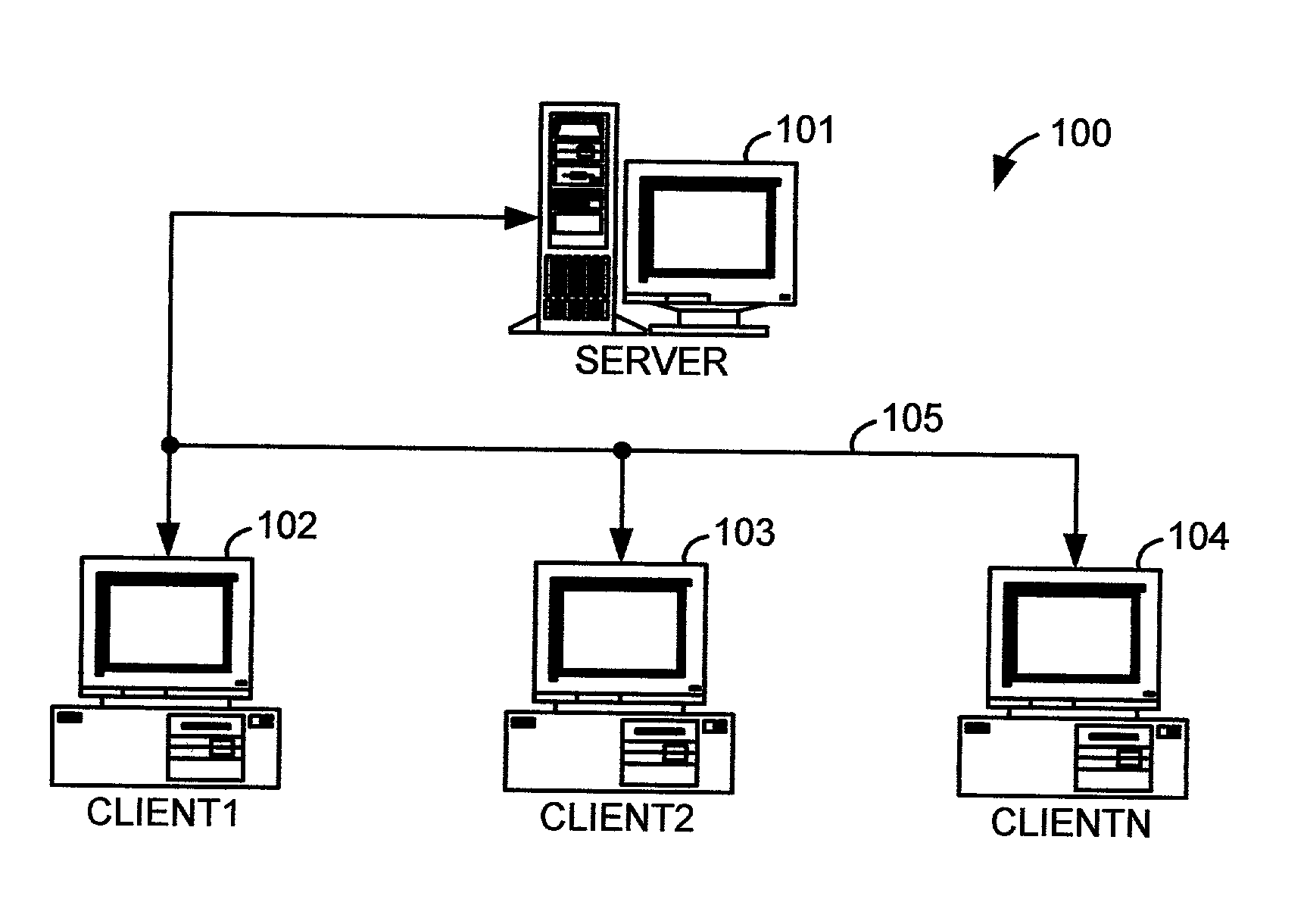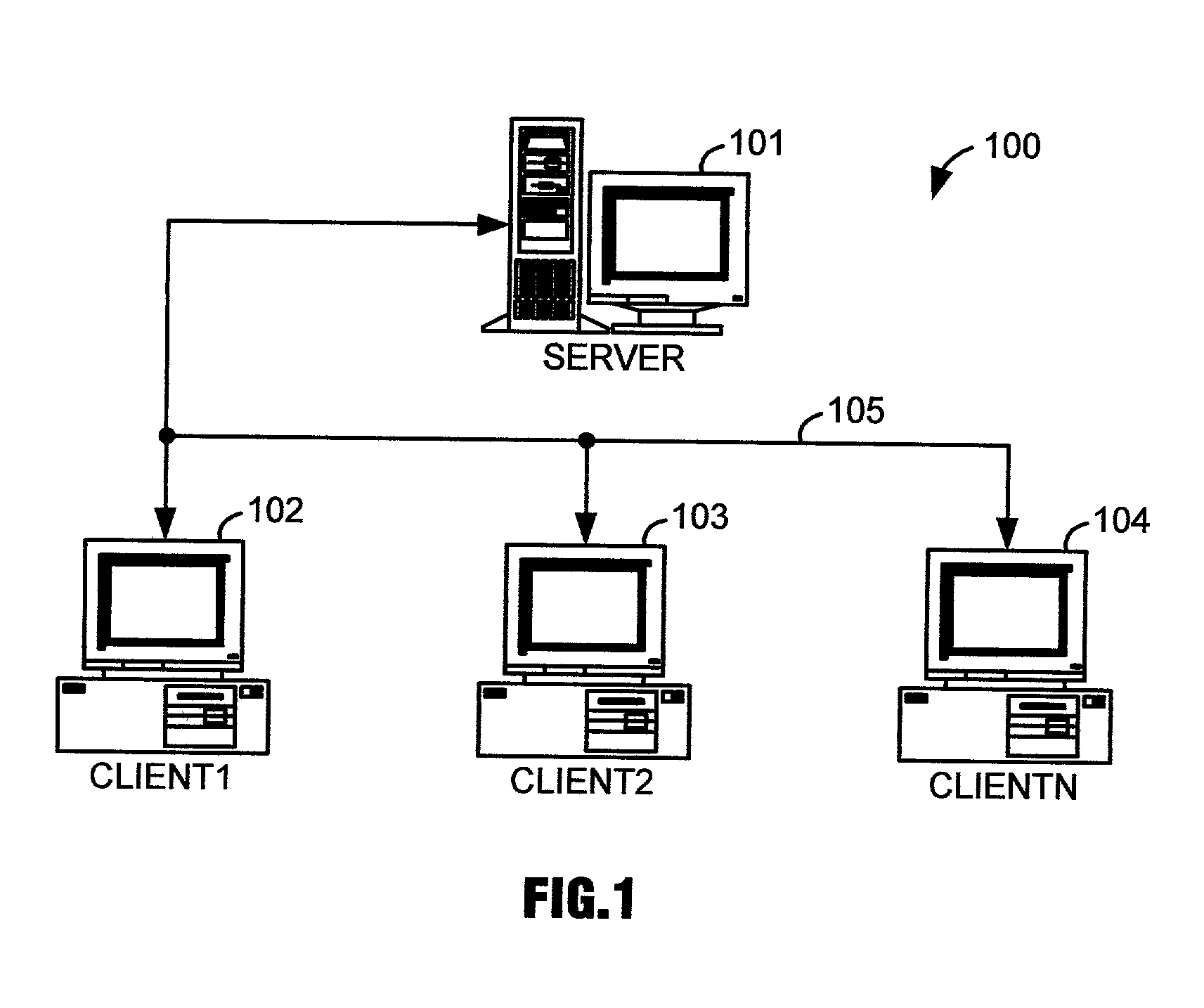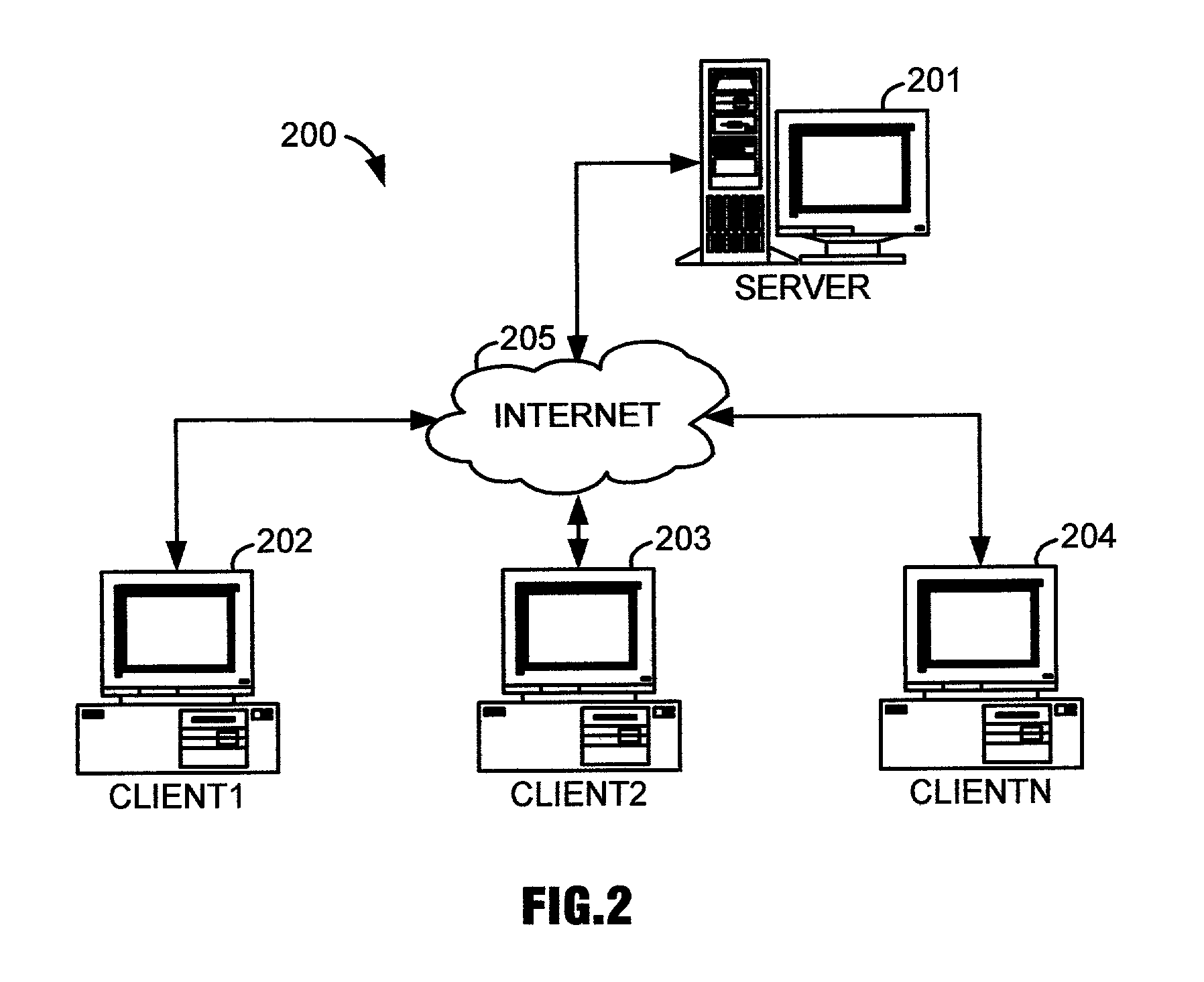Method and apparatus for restricting access to a database according to user permissions
a database and user permission technology, applied in the field of restricting access to a database according to user permissions, can solve the problems of numerous problems, inconvenient maintenance, and inconvenient implementation of conventional database management systems, etc., and achieve the effect of simple maintenance and easy implementation
- Summary
- Abstract
- Description
- Claims
- Application Information
AI Technical Summary
Benefits of technology
Problems solved by technology
Method used
Image
Examples
Embodiment Construction
[0045] FIGS. 10.about.12 illustrate, as examples of the present invention, database security systems that restrict access to database records according to user permissions. A significant distinguishing feature of these database security systems is that they control client user access to only authorized records of tables. Therefore, they do not require that tables such as the tables of FIGS. 7.about.9 be broken up into smaller tables, so that each smaller table is accessible only by an authorized client user or related group of users. Therefore, less tables are required to implement the databases for these systems, less information redundancy is incurred, and their databases are easier to maintain than those of the conventional database security systems described in reference to FIGS. 4.about.6.
[0046] In the database security system of FIG. 10, a permissions manager 1006 receives a user identification (USERID) 1005 originating from a client user that uniquely identifies the user as a...
PUM
 Login to View More
Login to View More Abstract
Description
Claims
Application Information
 Login to View More
Login to View More - R&D
- Intellectual Property
- Life Sciences
- Materials
- Tech Scout
- Unparalleled Data Quality
- Higher Quality Content
- 60% Fewer Hallucinations
Browse by: Latest US Patents, China's latest patents, Technical Efficacy Thesaurus, Application Domain, Technology Topic, Popular Technical Reports.
© 2025 PatSnap. All rights reserved.Legal|Privacy policy|Modern Slavery Act Transparency Statement|Sitemap|About US| Contact US: help@patsnap.com



